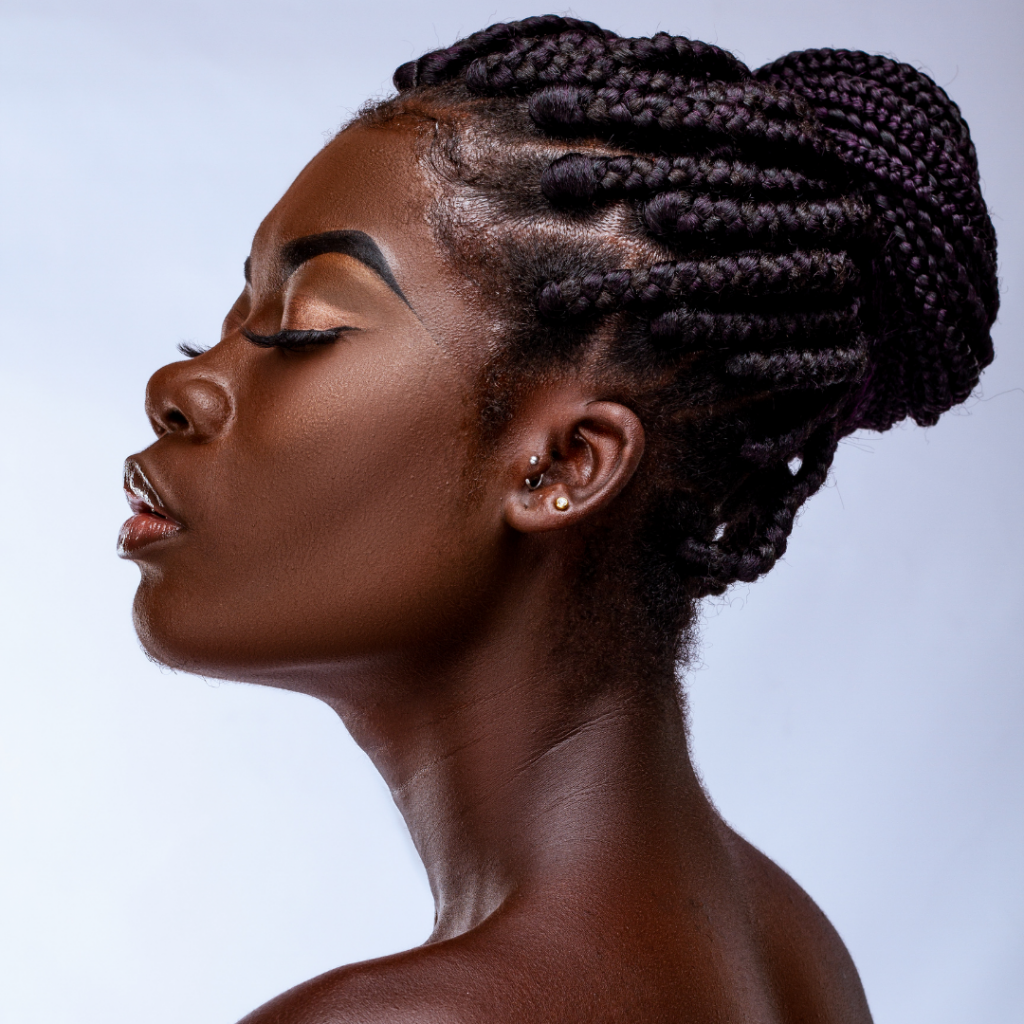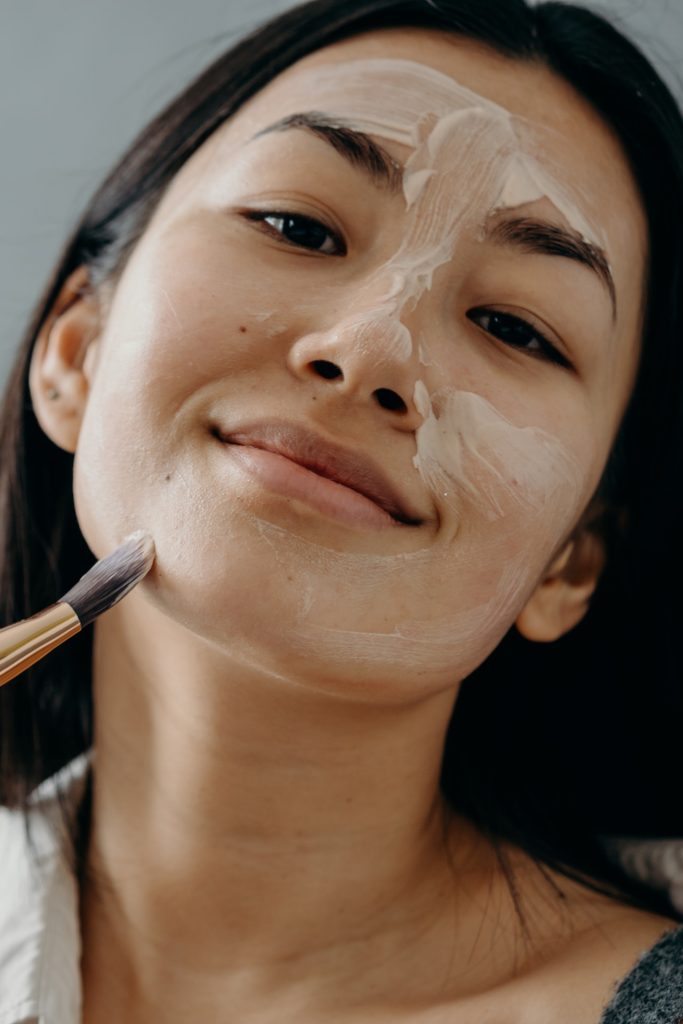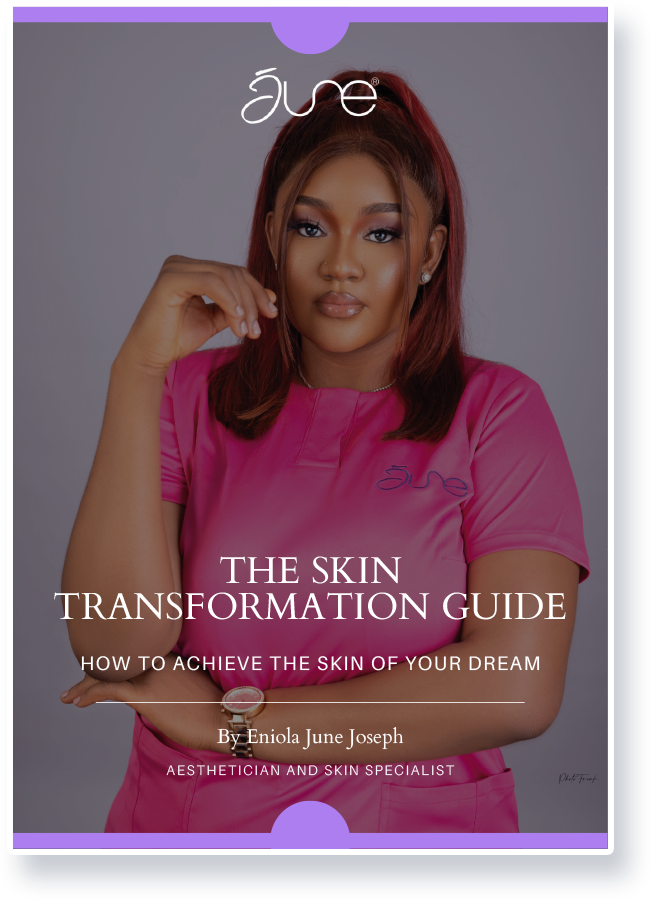It’s sad but true; acne isn’t limited to your teenage years. Even if you’ve been rocking adulthood for years, you can still wake up to a big red attention-seeking zit right in the centre of your forehead. The good news is that narrowing down to the right products for acne and keeping to a daily skincare routine can help you remove these nasty pimples and achieve clear, smooth, healthy skin. Our 6 Steps Daily Skin Routine For Acne Prone Skin is curated to guide you in choosing the right methods and products for blemish-free skin.
But before we read those, what exactly causes acne? why is it a major pain for millions of people across the world
What causes acne on the skin?
Acne develops on the skin when the sebum (oily hair and skin lubricant), bacteria, and dead skin cells block or clog the hair follicles. The blockage triggers inflammation and possible infection of the skin, leading to a severe case of acne.
A skincare routine is the most effective way to prevent these primary causes of acne. And the key to an effective routine is the quality and type of products. So, if you’re unsure how to select the best products for your practice, you can refer to our guide on choosing good skincare products for your skin type.
The daily 6-step acne-preventing skincare routine
A daily acne skin care routine is a foolproof method to protect anyone prone to skin breakouts. However, with many recommendations out there, it’s often confusing to create your skincare routine.
But don’t you worry, see our 6-step routine outline below:
- Cleanse
- Tone
- Apply Medications
- Moisturise
- Protect
- Apply Retinol Product
This daily exercise helps you expel excess oil, keeping your pores clean and free of infections or inflammations.
Step 1: Cleanse
Cleansing is an essential step in any skincare routine because it allows you to remove the previously applied products and specks of dirt blocking your pores. The face is pretty delicate, so gently use your fingertips or soft washcloth when you wash it.
Use a clean washcloth daily and lukewarm water instead of hot water.
Make sure the cleansing extends to the neck, jawline, and all around the ear. Additionally, make sure your cleanser is ideal for your skin type because your choice of product can influence your acne medication.
For example, over-the-counter (OTC) foamy cleansers often have active ingredients, are great for mild breakouts and don’t require medications. But make sure you opt for one that contains salicylic acid or benzoyl peroxide if you get inflammation of acne from the former.
However, if you’re currently under medication or prefer adding a doctor’s prescription to your routine, you will need a gentle foaming and non-medicated cleanser.
Our Top Pick: We recommend the CeraVe Foaming Facial Cleanser for medicated cleansers
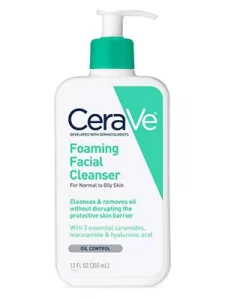
and the Cetaphil Gentle Foaming Face Cleanser for non-medicated cleansers.
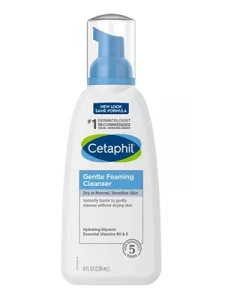
Tip: Double cleanse using active ingredients like exfoliating acids or charcoal to remove excess oil and deeper dirt and target clogged pores.
Step 2: Tone
Skin toners or Astringents are effective for removing excess oil and toning and hydrating your skin. They also help remove blackheads and blemishes. Skincare experts often recommend gently applying it using a cotton ball or pad to remove the cleanser’s residue, leftover dirt, and excess oil.
There are various options, depending on your skin type or acne treatment, but keep note of the following:
- Astringents are best used for oily skin types because they remove excess oil. So, if your skin is dry due to your skin condition or acne treatment, you should always opt for hydrating toners which replenish the lost moisture and prevent breakouts.
- Alcohol dries up pretty quickly, so a product containing it in high percentage can quickly dry off and thereby irritate your skin. Since you have sensitive skin, alcohol-free products are your best bet at avoiding skin irritation and inflammation when toning.
Our Top Pick: We recommend the alcohol-free, hypoallergenic, and non-comedogenic Neutrogena Alcohol-free Facial Toner For All Skin Types.
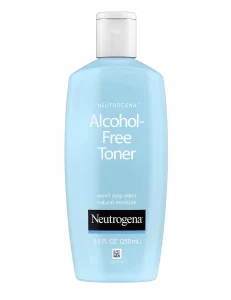
Step 3: Apply medications
This step is only valid if you used a non-medicated cleanser in step 1, i.e., if you used a gentle foaming cleanser that does not have active ingredients. So, it’s your final chance to treat your skin with the active ingredients absent in the cleaner.
After you’ve dried your face from the cleanser and toner, lightly apply your acne treatment creams as prescribed by your dermatologist. Allow your skin to fully absorb the cream or gel before moving to the next step.
Tip: For OTC treatment, you can begin to see results after six weeks, but if you don’t see results after that, you should opt for a more potent medication with your dermatologist.
Step 4: Moisturise
Moisturising might seem far-fetched for oily skin, but it’s too important to skip. Your cleanser or acne treatment might dry out and leave your skin vulnerable to breakouts and needing moisture.
However, when using moisturisers, always opt for oil-free and non-comedogenic products with aloe Vera and hyaluronic acid. Since the gels and lotions are lighter than creams, they are ideal for complete absorption, collagen protection, and acne prevention.
Our Top Pick: We recommend the CeraVe AM Facial Moisturizing Lotion SPF 30 | Oil-Free Face Moisturizer, which is oil-free, non-comedogenic, and offers sunscreen protection.
Tip: Applying a moisturiser twice daily can replenish the moisture and help keep the skin’s oil production in check.
Step 5: Protect
If you use exfoliating ingredients or other acne treatment medications, your skin might be more photosensitive, i.e., have little protection from UV damage; hence, skin protection is necessary for an effective acne skincare routine.
Look for products that won’t clog the pores or worsen the breakouts. A good recommendation will also contain anti-inflammatory ingredients like niacinamide and have a lightweight feel. Your choice should also be face-specific since facial sunscreen is less oily and devoid of sunscreen fragrance.
Tip: In most cases, your moisturisers already contain SPF for skin protection, but if yours doesn’t, you can choose a separate sunscreen product.
Step 6: Apply Retinol Product
Retinol is famous for reducing wrinkles, controlling acne, and unclogging pores. It’s one of the most versatile acne treatments any adult can opt for, although it doesn’t necessarily have to be in your routine if you are not comfortable using it.
Retinol is the OTC version of Vitamin A derivative (Retin A), a vital substance to always provide for your skin. And according to healthcare experts, Retinol also helps exfoliate the external skin layers and speed up cell regeneration.
Tip: Apply it once or twice every week to get your skin accustomed and avoid irritation, and then you can increase the usage until you are comfortable using it in your daily routine.
Do’s and Don’ts of skincare for preventing acne
- Do check for active ingredients in your products. For example, doctors recommend cleansers and acne treatments with one of the four active ingredients (Benzoyl peroxide, Salicylic acid, Adapalene, Retinol).
- Do wash your skin twice a day; you can use cleansers with active ingredients or those without.
- Reduce your exposure to UV rays.
- Don’t wear heavy and oil-based makeup. They often clog up the pores and make breathing difficult for your skin.
- Don’t use harsh bar soaps and antibacterial hand washes that promise clear skin. They will only irritate your skin and won’t remove your acne.
- Don’t use toners and astringents if they excessively dry your skin. Likewise, stay away from acne treatment medications that are super-drying.
FAQs about skincare routine for acne-prone skin
When should I do my skincare routine?
The ideal period to fix your skincare routine is in the Morning and Night. The morning routine clears up dirt, dead skin cells, and excess oil accumulated overnight while preparing and protecting you for the day. The nighttime routine clears your skin from the day’s deposit and prepares your face for overnight protection.
How to layer skincare for acne-prone skin?
Start your skincare routine with a cleanser, and toner, then apply products with moisturizing and protection features.
The ideal layer for any skin type should follow:
- Cleansing
- Toning
- Moisturizing
- Protecting
What Moisturiser to use for Acne-Prone Skin?
Dermatologists recommend lightweight, non-comedogenic moisturizers that are oil-free and contain aloe vera and hyaluronic acid.
In conclusion, the major goal when creating a skincare routine is hygiene and treatment. Sensitive skin means you easily react to dirt and clogs in your pores.
Hence, keeping a daily regimen to remove these foreign materials, add extra nourishment, and additional layers of protection, go a long way in helping your keep a smooth, healthy, and acne-resistant skin.

